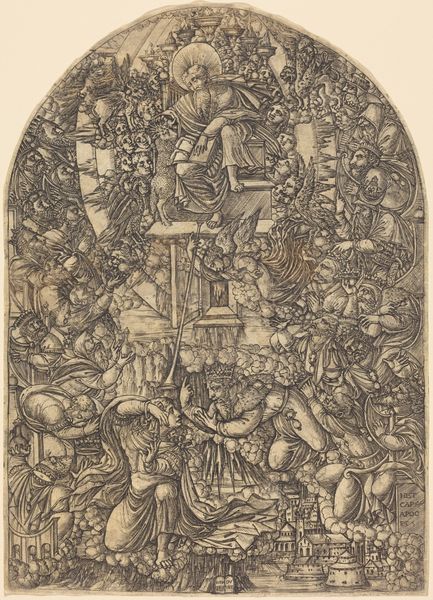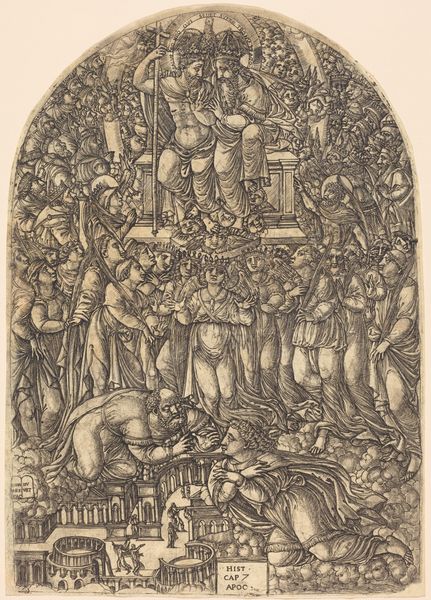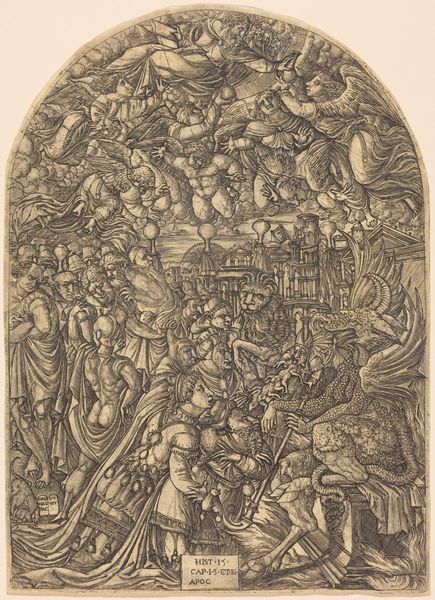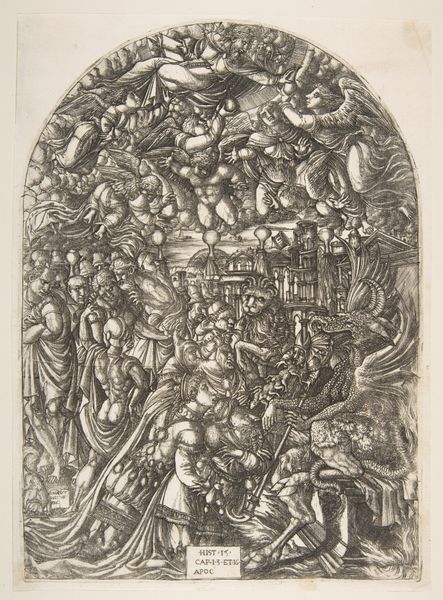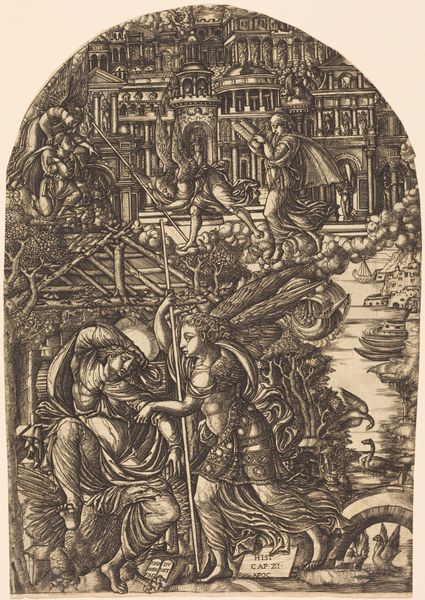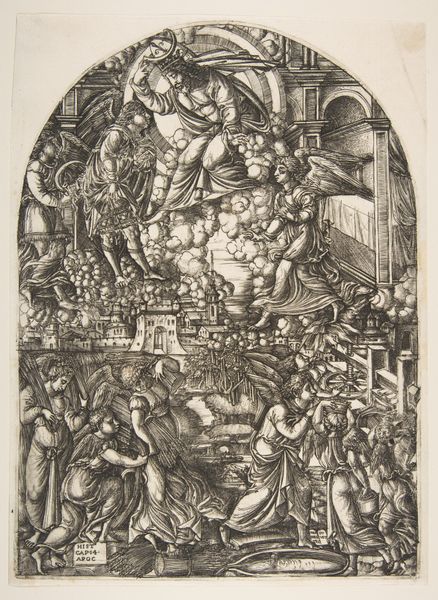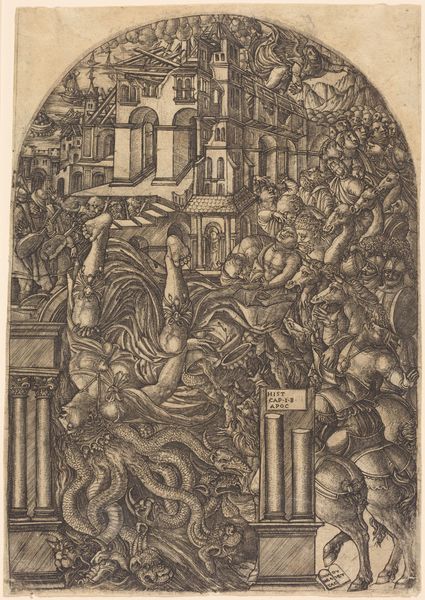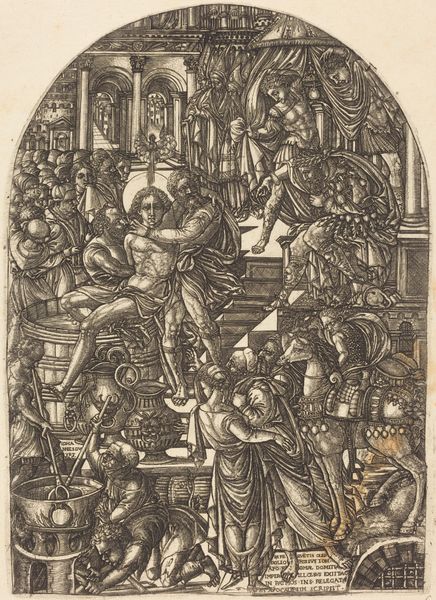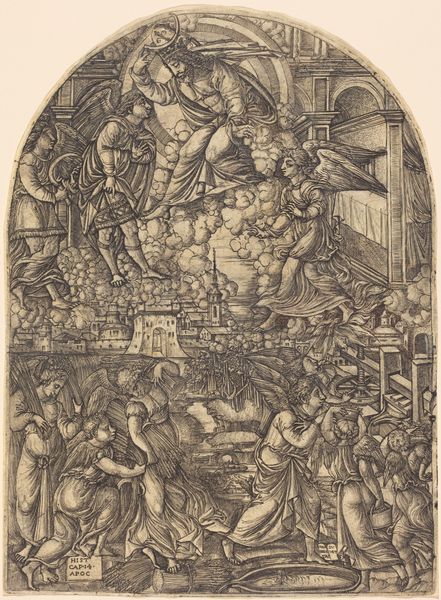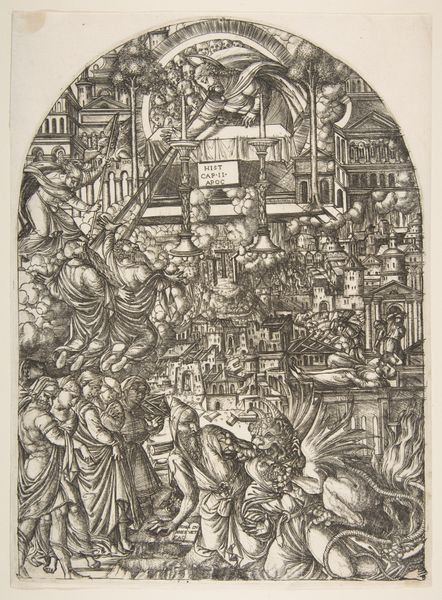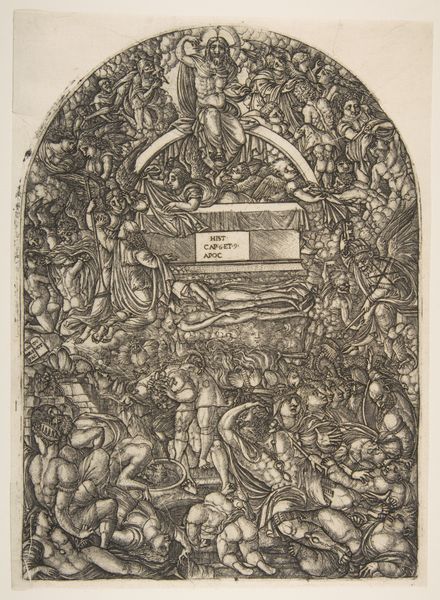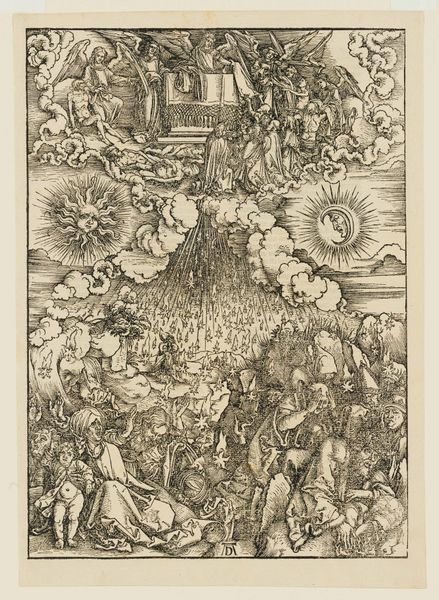
drawing, print, ink, engraving
#
drawing
# print
#
mannerism
#
figuration
#
ink
#
history-painting
#
engraving
Copyright: National Gallery of Art: CC0 1.0
Curator: This compelling print, "Saint John Summoned to Heaven," was crafted by Jean Duvet sometime between 1546 and 1556, during the height of the Mannerist period. Look closely at the swirling masses conjured by the engraved lines! Editor: It feels so turbulent! Almost suffocating. I'm struck by how the multitude of figures seems to press in on John, obscuring any sense of serene ascension. What an overwhelming vision! Curator: Duvet, indeed, worked in a distinctive Mannerist style. He favored complex compositions filled with figures, dense ornamentation, and dramatic emotional displays. Editor: What about all those details? What do you think, considering those iconographic precedents? The halo around Saint John's head for sure, but so much else. The elders with crowns, the books, that…is that a lamb? Curator: Yes, those elements certainly carry traditional meanings. The lamb, or Agnus Dei, symbolizes Christ. The elders holding crowns represent the 24 elders described in Revelation. And the books, held by John and perhaps symbolizing divine wisdom. Duvet uses those to locate his version in a larger cultural and theological space, specifically Revelation 4. Editor: So, Duvet places John in the position to witness divine sovereignty? Even the engraving itself is rife with cultural markers. Curator: Right. And one cannot overlook Duvet's status as a goldsmith as being related to how the piece presents itself. He even signed this "Jean Duvet, goldsmith, born in Dijon". His work existed during a time of great religious and political change, deeply shaping his output, influencing the commission and even shaping our interpretation. Editor: Looking again, it's clear this isn’t just a straightforward religious scene. The sheer number of faces, rendered with such intensity, suggest a deeper psychological drama. They reflect more than just Saint John’s spiritual calling, almost some kind of shared subconscious— a kind of archetypal confrontation with the divine. Curator: I would say so. Reflecting on its cultural moment certainly allows us to ask so much more about its legacy as art. Editor: Agreed. What at first seems like an old-fashioned engraving blossoms into an exceptionally thoughtful reflection of faith, identity, and collective memory.
Comments
No comments
Be the first to comment and join the conversation on the ultimate creative platform.
